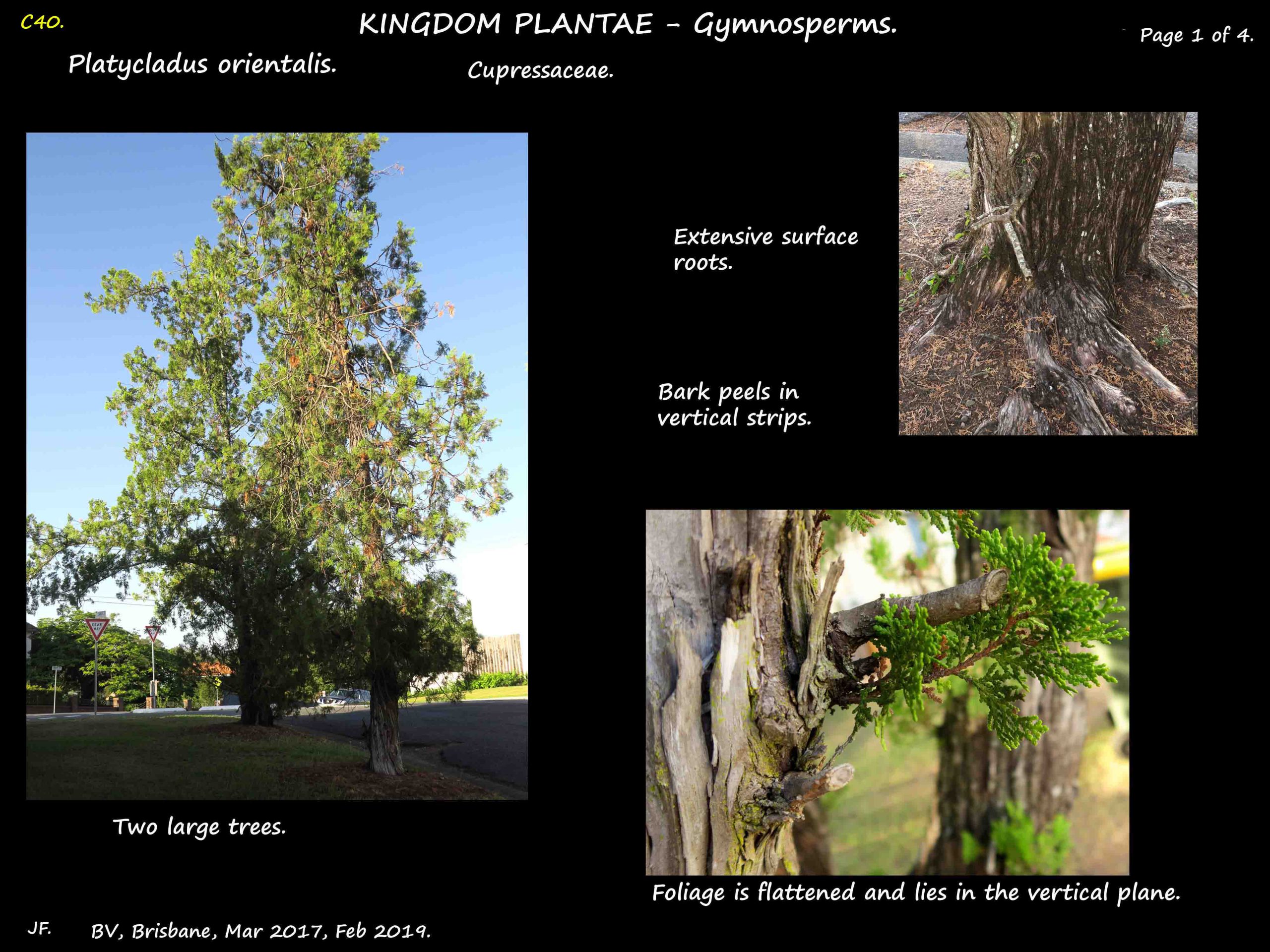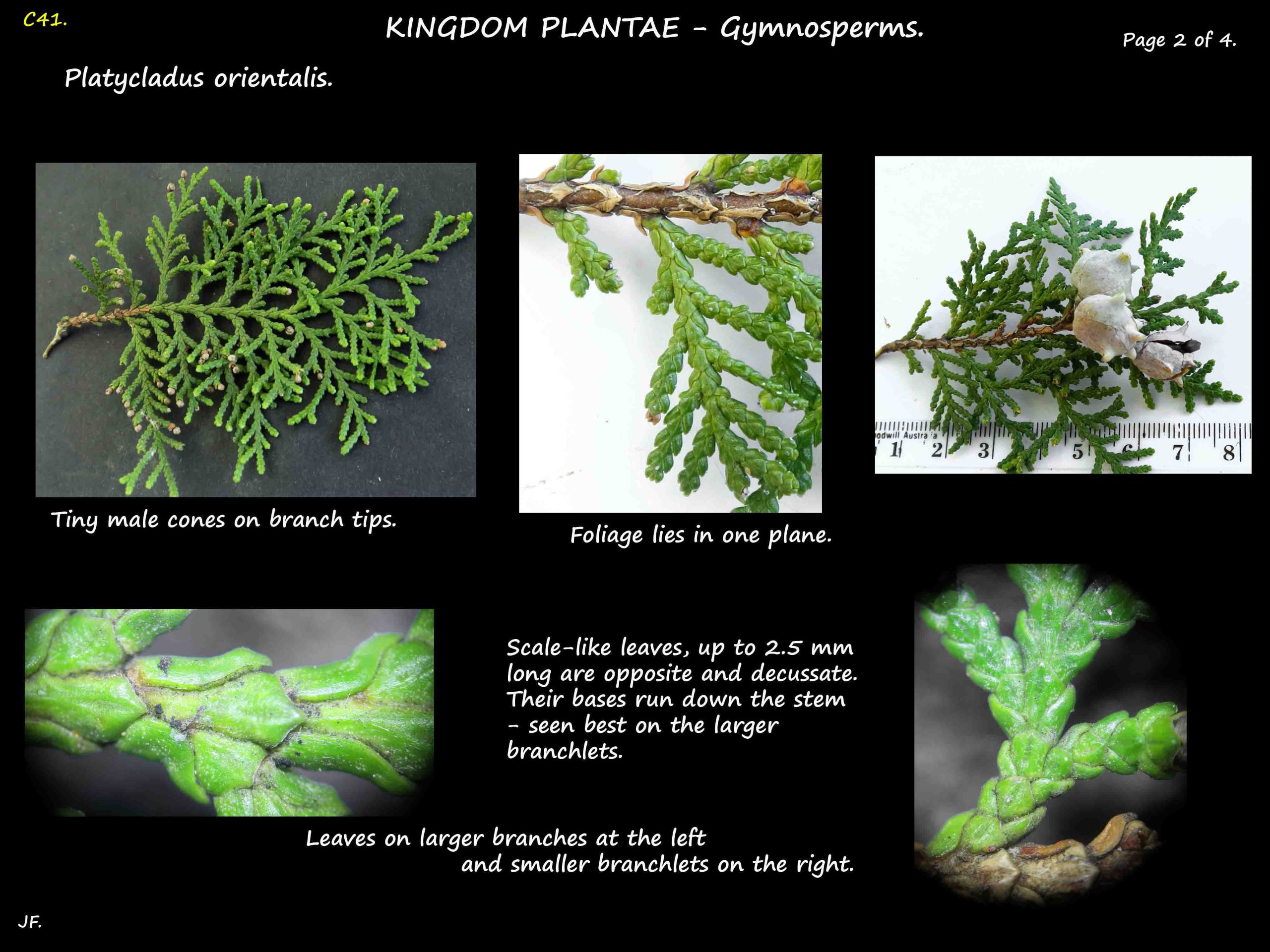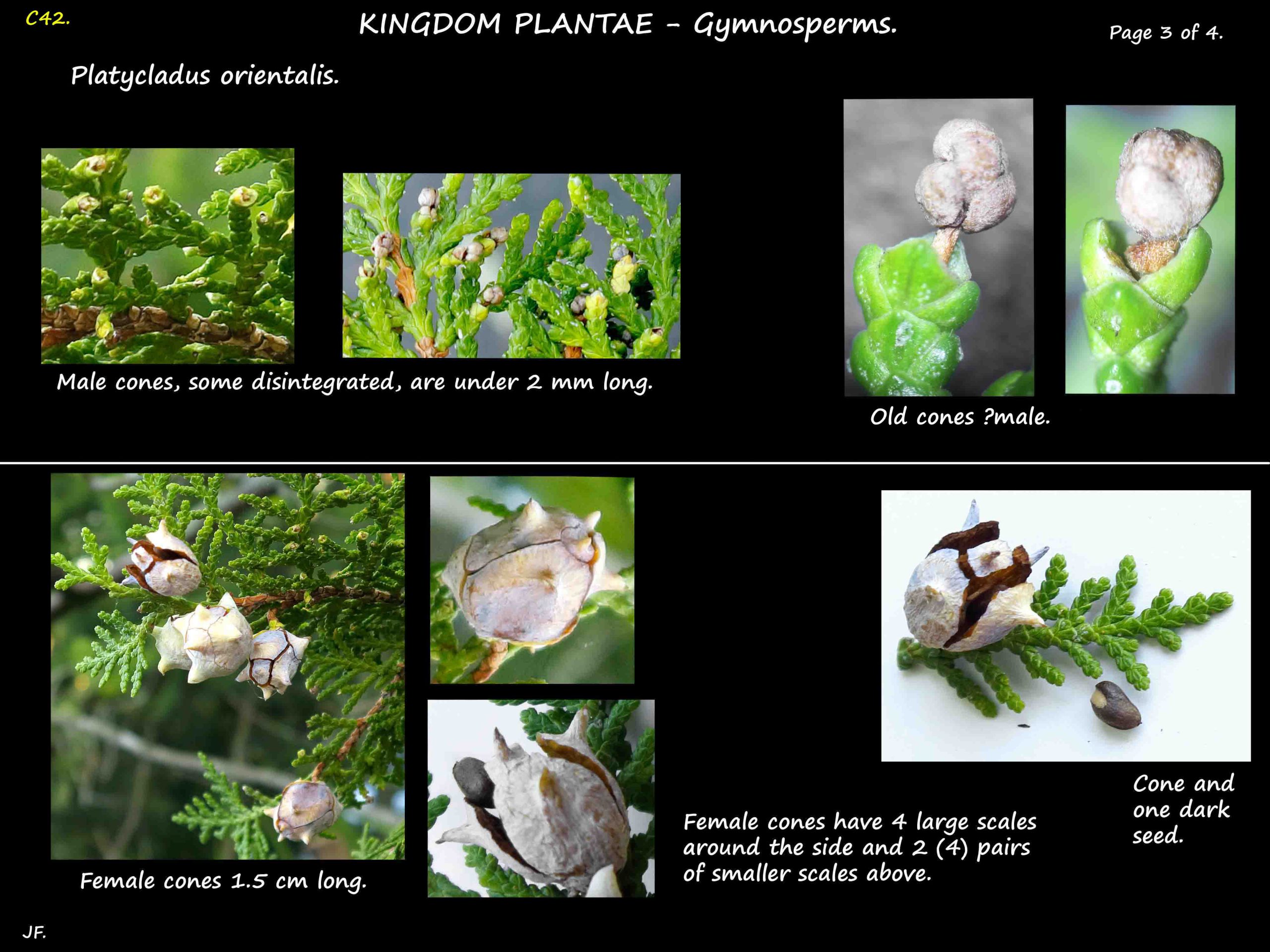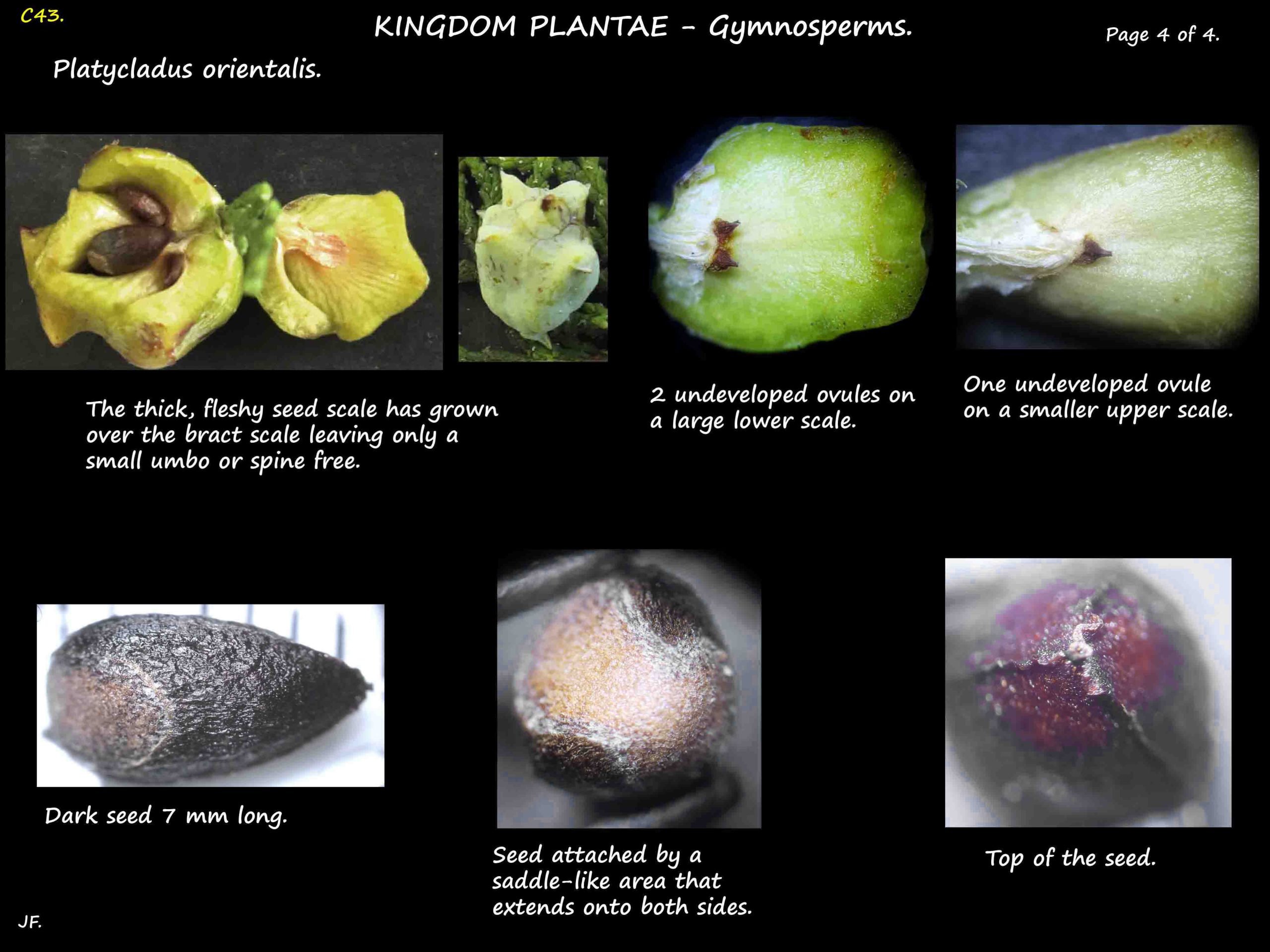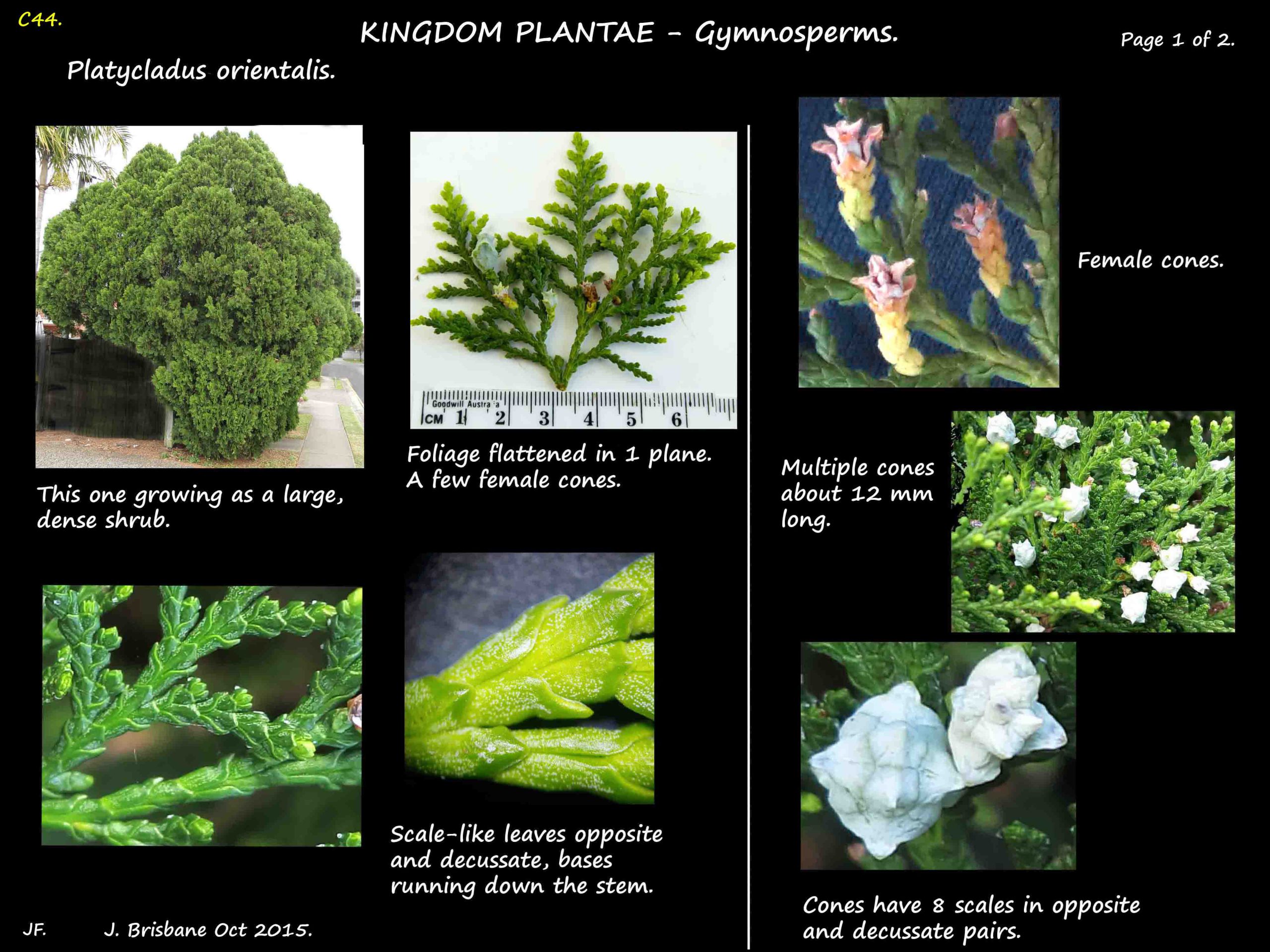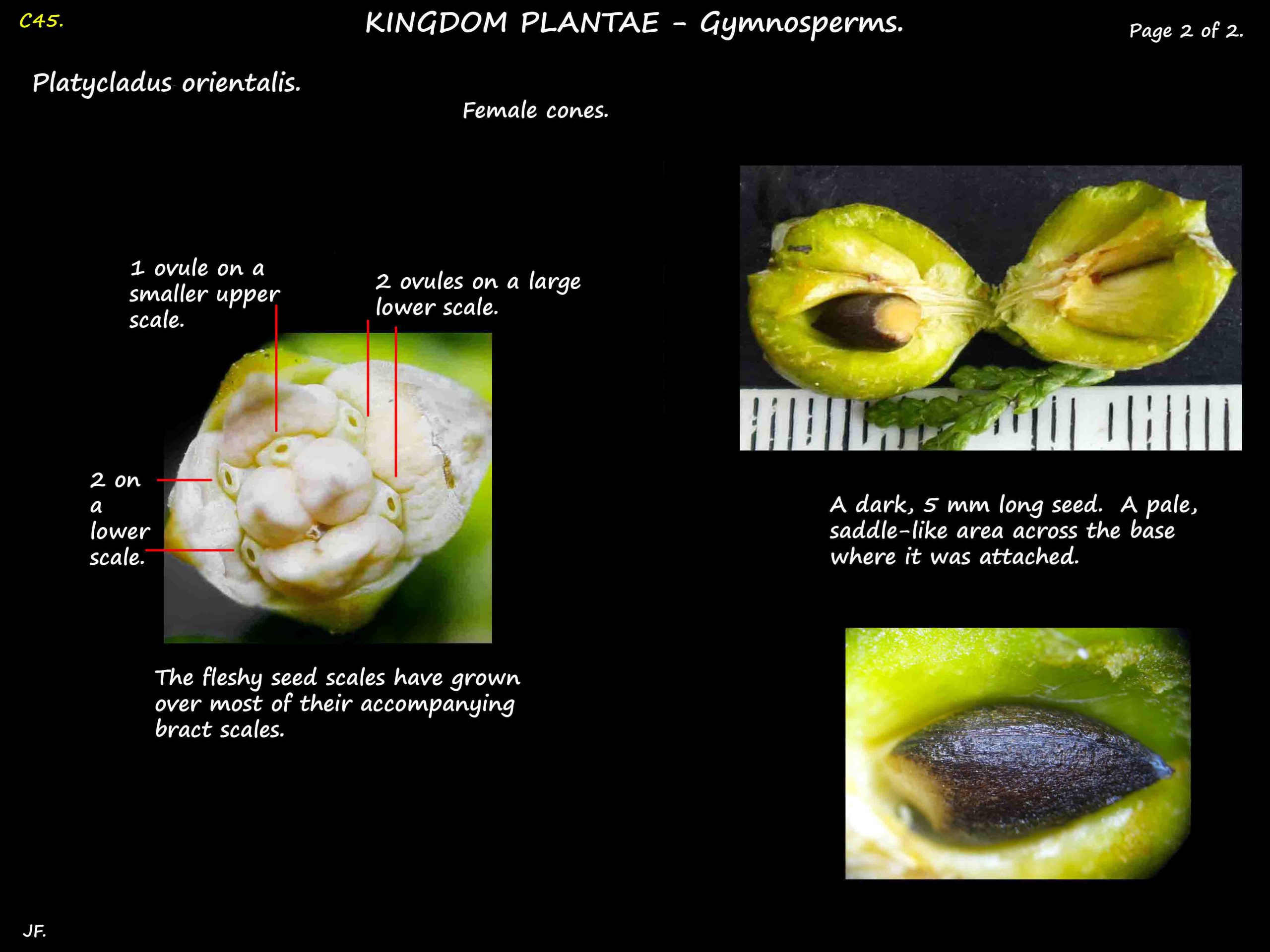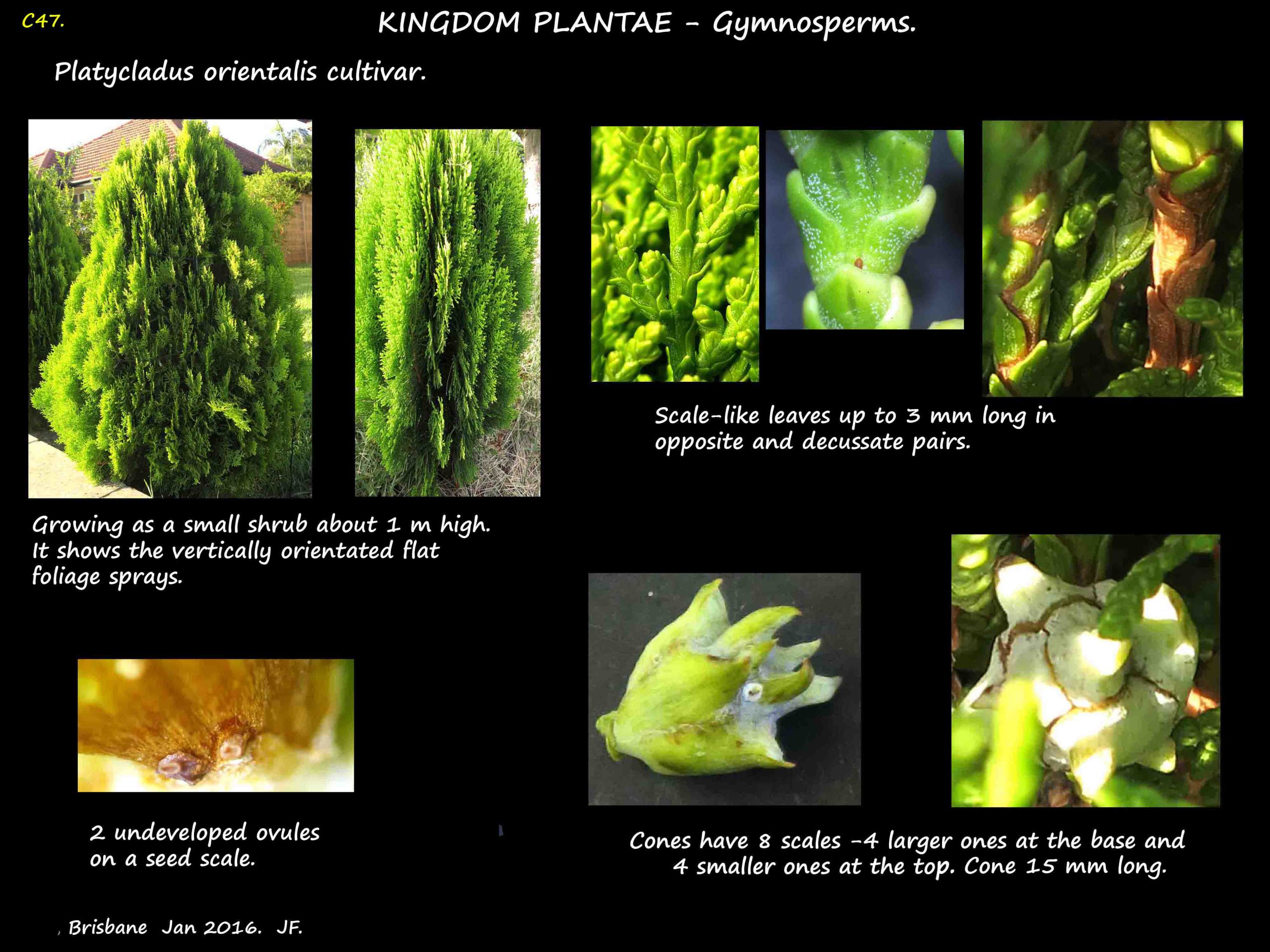Platycladus orientalis.
Division Pinophyta > Order Pinales > Family Cupressaceae.
The genus has only one species, still sometimes seen under the old name of Thuja orientalis.
There are hundreds of cultivars including many small compact shrubs.
It is cultivated in Australian parks and gardens and as a wind break or hedge.
An evergreen tree to 20 m high with relatively short branches.
It becomes less dense as it ages.
Thin reddish-brown bark peels in long vertical strips.
The small branchlets and leaves form flat sprays aligned vertically.
Overlapping, scale-like leaves, 2 to 4 mm long, are arranged in opposite, decussate pairs.
Leaves change from bright green to brownish or coppery in the colder months.
Male and female cones are on the same tree.
The 2 to 3 mm male cones are on the tips of branches.
Young female cones are a pinkish colour then bluish-green and mature to brown.
When the ovules have been fertilised the fleshy seed scales grow around the bract scales
leaving just their tips as a curved spine or umbo.
The mature oval cones are 15 to 25 mm long, with 6 (8-12) scales.
The lower 4 scales hold 2 (occasionally 3) seeds and the upper pair/s only one.
The seeds, 4 to 6 mm long and 3 to 4 mm wide, have no wings.
J.F.
